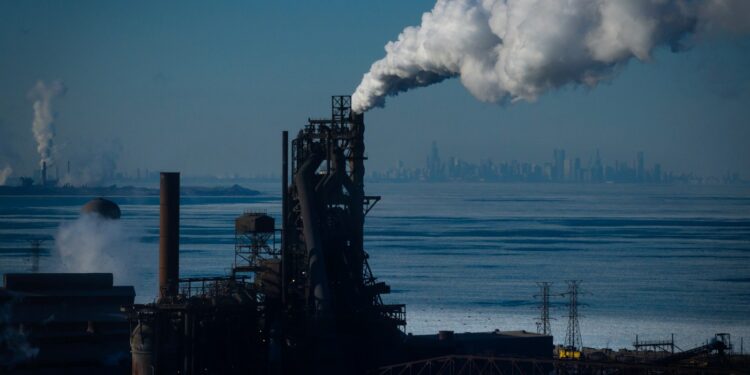Ten years ago, all steel products made at mills were produced in a blast furnace. Now, about 20% is produced with direct reduction, and the remainder is produced through blast furnaces.
Members of Gary Advocates for Responsible Development are encouraging U.S. Steel to take part in the growing direct reduction trend, saying the furnaces are better for the local environment and public health.
“Gary is known as a highly polluted city,” said Jack Weinberg, GARD’s environmental health and development analyst. “Gary’s air pollution and the fallout from air pollution causes too many respiratory diseases like asthma, cancers, cardiovascular diseases like heart attacks and premature deaths.”
GARD’s Green Steel Committee met Thursday night, discussing the best approaches to educate Gary’s community and U.S. Steel workers about green technologies, mainly direct reduction furnaces. Weinberg presented attendees with facts about direct reduction furnaces, including the environmental and health benefits, cost, and how the furnace works.
Kwabena Rasuli, a member of GARD, said a friend of his died from asthma complications, about one week after he had spoken at a hearing about the steel industry’s health effects in Northwest Indiana.
Rasuli has worked on the organization’s outreach, talking with local medical students about how pollution leads to more health issues in the region.
“They were very intrigued and interested in listening to some of the health issues that we’re having in the city where they’re getting their degrees from, where they’re going to be doctors,” Rasuli said. “The young people, they’re concerned about their futures.”
Acting Gary Council President Lori Latham, D-1st, encouraged GARD members to continue community outreach and share their concerns with U.S. Steel and to advocate for local public health, the steel industry transition, climate and natural areas.
“One of the best things that we can do when we feel like this is to get organized,” Latham said. “To get all of this work done, we need every single hand and every single foot that is in this room.”
Blast furnaces have historically been used in steel production, and it uses a coal product for heating and chemical reaction. Direct reduction furnaces use natural gas and could potentially reduce carbon dioxide emissions by half.
Gary Works is the biggest steel mill in the country, Weinberg said, and he’s worried the mill will decline or fail if the blast furnaces are not replaced.
“If that happens, then the city of Gary will be saddled with a seven-mile stretch of an abandoned steel mill, a property that’s right between the city core and its downtown,” Weinberg said. “If Gary Works shut down, there may be less pollution, but there’s also a big problem in how much toxic stuff is buried in Gary Works every year. That’s not a place you can clean up easily.”
Northwest Indiana’s steel mills produced nearly two tons of carbon dioxide each year, Weinberg said, adding that the region’s emissions rank nationally and globally. If the mills switch to direct reduction, Weinberg said the community will see emissions reductions right away.
Weinberg also expressed concerns with Nippon Steel, a Japanese company that previously tried to buy U.S. Steel before former President Joe Biden shut down the deal in January. Nippon could still impact U.S. Steel, as President Donald Trump opened conversations with the Japanese company about an “investment rather than a purchase.”
Nippon previously planned to invest at least $300 million into the Gary Works facility, money that was to go toward relining the main blast furnace. With the investment, the furnace’s life would be extended by up to 20 years.
Nippon and U.S. Steel have both said direct reduction furnaces are important, Weinberg said, but he’s worried that neither company wants to bring the technology to Gary.
“There is still time for U.S. Steel or whoever owns Gary Works to reverse course,” Weinberg said. “With intelligent management and a good plan, Gary Works can still be modernized into a state-of-the-art, profitable steel mill.”







